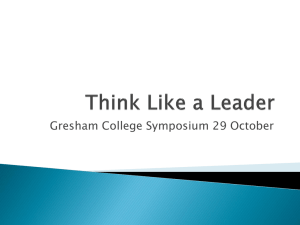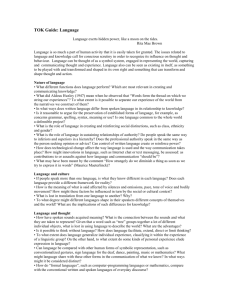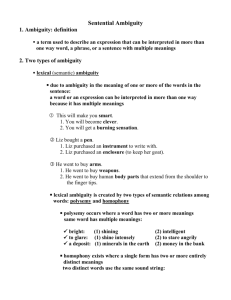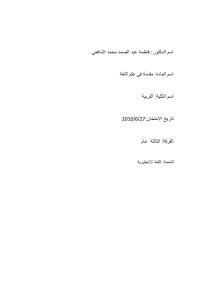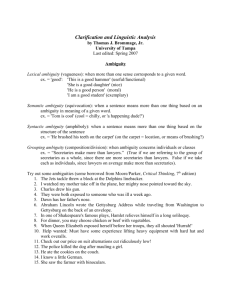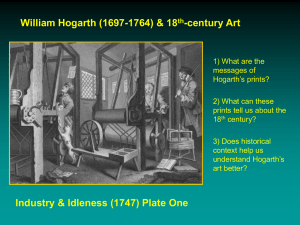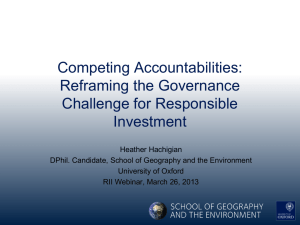Risk, Information and Insurance
advertisement
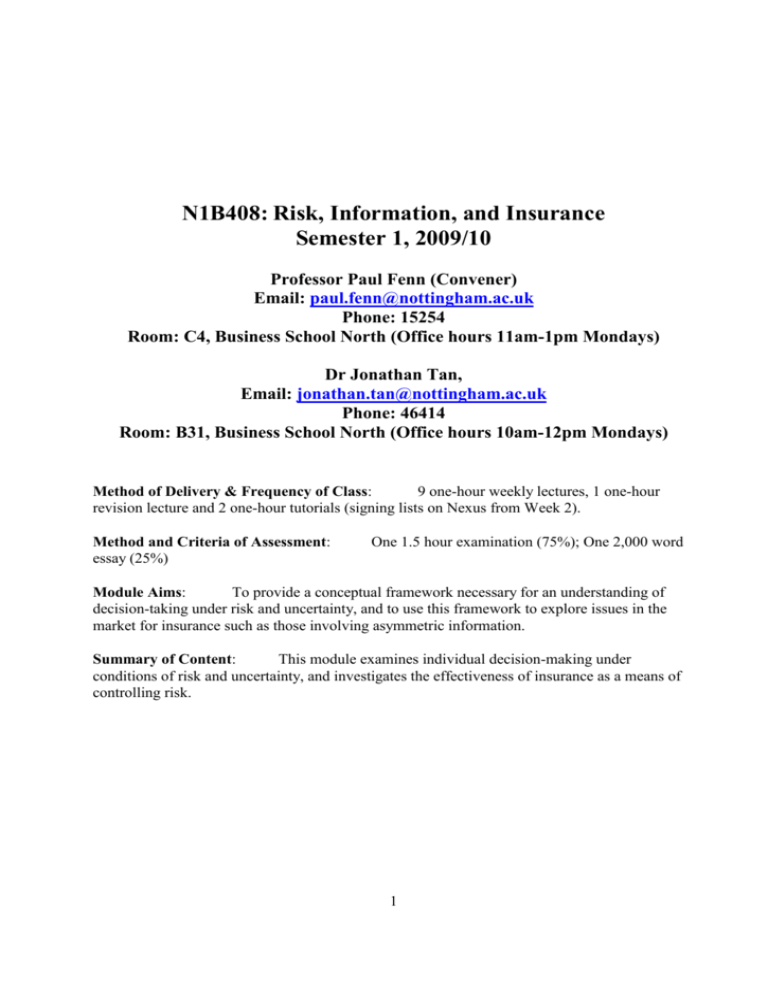
N1B408: Risk, Information, and Insurance Semester 1, 2009/10 Professor Paul Fenn (Convener) Email: paul.fenn@nottingham.ac.uk Phone: 15254 Room: C4, Business School North (Office hours 11am-1pm Mondays) Dr Jonathan Tan, Email: jonathan.tan@nottingham.ac.uk Phone: 46414 Room: B31, Business School North (Office hours 10am-12pm Mondays) Method of Delivery & Frequency of Class: 9 one-hour weekly lectures, 1 one-hour revision lecture and 2 one-hour tutorials (signing lists on Nexus from Week 2). Method and Criteria of Assessment: essay (25%) One 1.5 hour examination (75%); One 2,000 word Module Aims: To provide a conceptual framework necessary for an understanding of decision-taking under risk and uncertainty, and to use this framework to explore issues in the market for insurance such as those involving asymmetric information. Summary of Content: This module examines individual decision-making under conditions of risk and uncertainty, and investigates the effectiveness of insurance as a means of controlling risk. 1 Sample examination paper The University of Nottingham BUSINESS SCHOOL A LEVEL B MODULE, AUTUMN SEMESTER 2004-2005 RISK, INFORMATION AND INSURANCE Time allowed ONE hour THIRTY minutes __________________________________________________________________________ Candidates must NOT start writing their answers until told to do so Answer TWO Questions All questions carry equal marks 1. Compare and contrast the state preference and Machina triangle diagrams as means of representing the indifference maps for risk averse expected utility maximisers. 2. “Subjective Expected Utility Theory is not good at explaining real world behaviour but it is nevertheless a good normative theory of choice”. Critically discuss this statement. 3. “Insurance premiums always reflect the size of the sum insured and the probability of loss when insurers are fully informed and transaction costs are negligible”. If so, compare the available options for buyers of insurance to minimise their premiums. 4. Use an Edgeworth Box diagram to show how risks will be shared optimally between two risk averse decision takers. Explain what factors determine the efficient allocation of risk. 5. When moral hazard is present, how can policy conditions be designed in order to make insurance contracts incentive compatible? 6. “If motor insurers can assess the risk of accidents accurately across vehicle types and driver characteristics, no adverse selection problems will arise”. Discuss in relation to available evidence. 2 Coursework essay topics A (word-processed) assignment of 2000 words (with weight 25% of final assessment) must be chosen from one of the topics listed below. The assignment must be submitted by 2.00pm on Friday, December 11th, 2009. Topic 1 “Available evidence on insurance buying and selling decisions casts doubt on the validity of Subjective Expected Utility Theory.” Comment, and discuss whether alternative theories of choice under uncertainty yield better predictions in the light of ambiguity effects. Reading: Course Reading List from Week 3 plus the following [all of these are available from online resources]: Hogarth R and Kunreuther H (1985), “Ambiguity and insurance decisions”, American Economic Review, 75, 386-390 Kunreuther H, Meszaros J, Hogarth R Spranca M, (1995), “Ambiguity and underwriter decision processes”, Journal of Economic Behaviour and Organization, 26(3), 337-352 Di Mauro C and Maffioletti A, (2002),”The valuation of insurance under uncertainty: does information about probability matter?” Geneva Papers on Risk and Insurance Theory, 26:195 Einhorn H and Hogarth R, (1986), “Decision making under ambiguity”, Journal of Business, 59, 225-250 Cabantous, L (2007), ‘Ambiguity Aversion in the Field of Insurance: Insurers’ Attitude to Imprecise and Conflicting Probability Estimates’ Theory and Decision, 62(3), 219-240. Topic 2 “Testing propositions involving information asymmetries is inherently difficult”. Discuss in the light of the available evidence on the existence of adverse selection in insurance markets? Reading: Course Reading List from week 8 plus the following [all of these are available from online resources]: Chiappori P and Salanie B (2000) “Testing for asymmetric information in insurance markets”, Journal of Political Economy, 108(1), 56-78. Cawley J and Philipson T (1999), “An empirical examination of information barriers to trade in insurance”, American Economic Review, 89(4), 827 Puelz R and A Snow (1994) “Evidence on adverse selection: equilibrium signalling and crosssubsidization in the insurance market” Journal of Political Economy, 102, 237-257 Cohen A (2005) ‘Asymmetric Information and Learning: Evidence from the Automobile Insurance Market’ Review of Economics and Statistics, 87(2), 197-207 Finkelstein, A and McGarry (2006), ‘Multiple dimensions of private information: evidence from the long-term care insurance market’, American Economic Review, 96(4): 938958 Finkelstein A and Poterba J (2002), ‘Selection Effects in the UK Individual Annuities Market’ Economic Journal, 112, 28-50. 3
